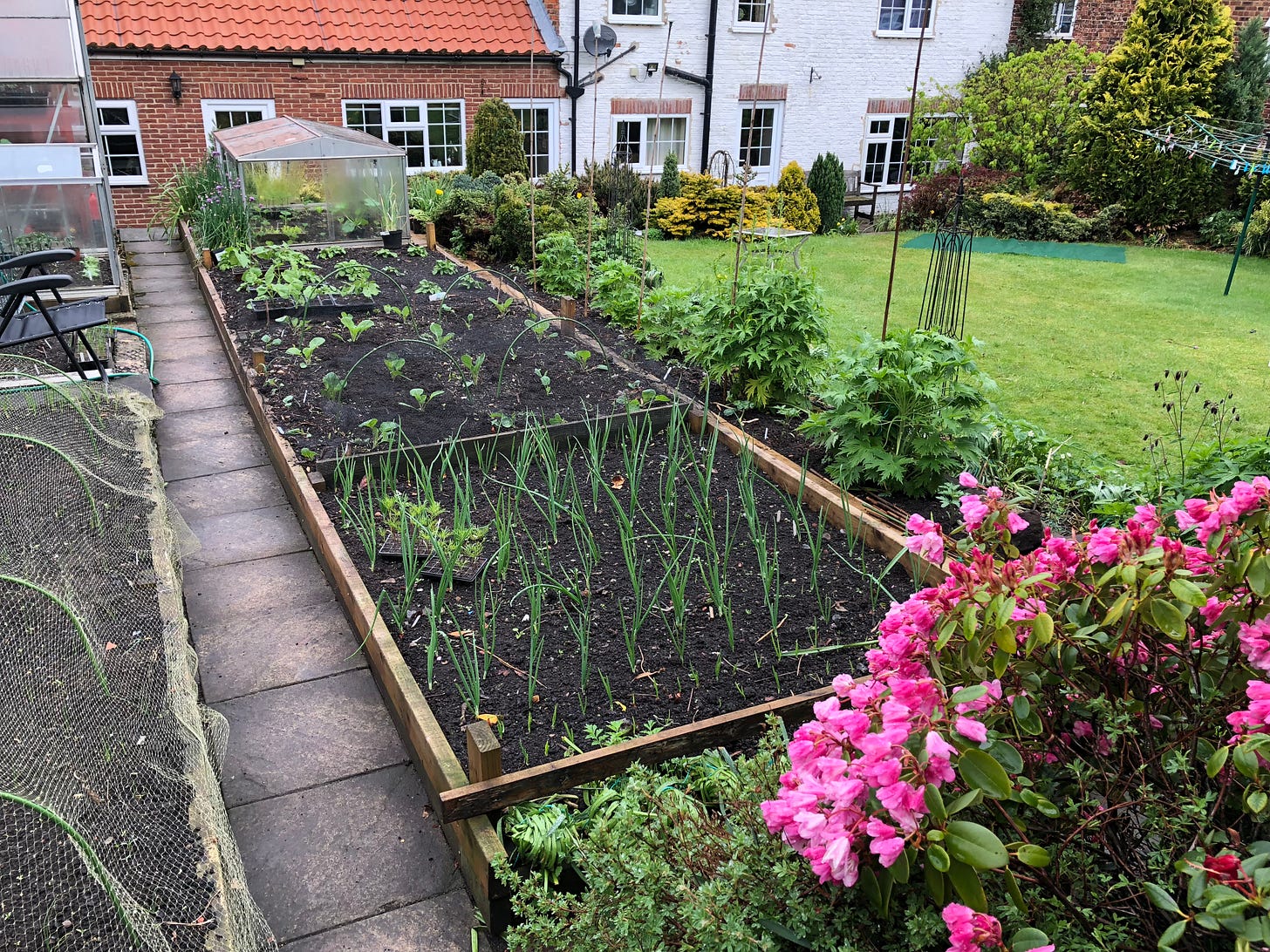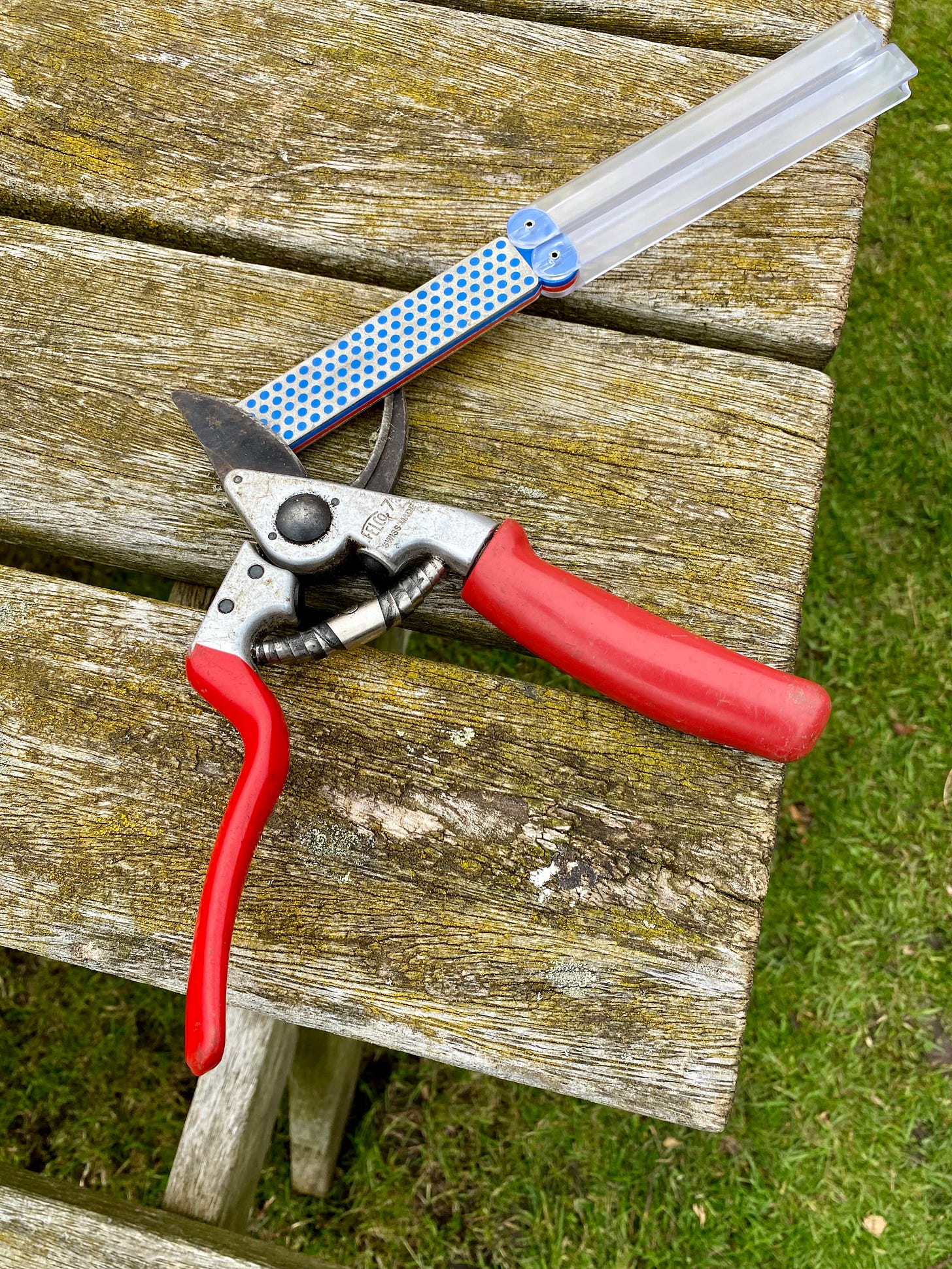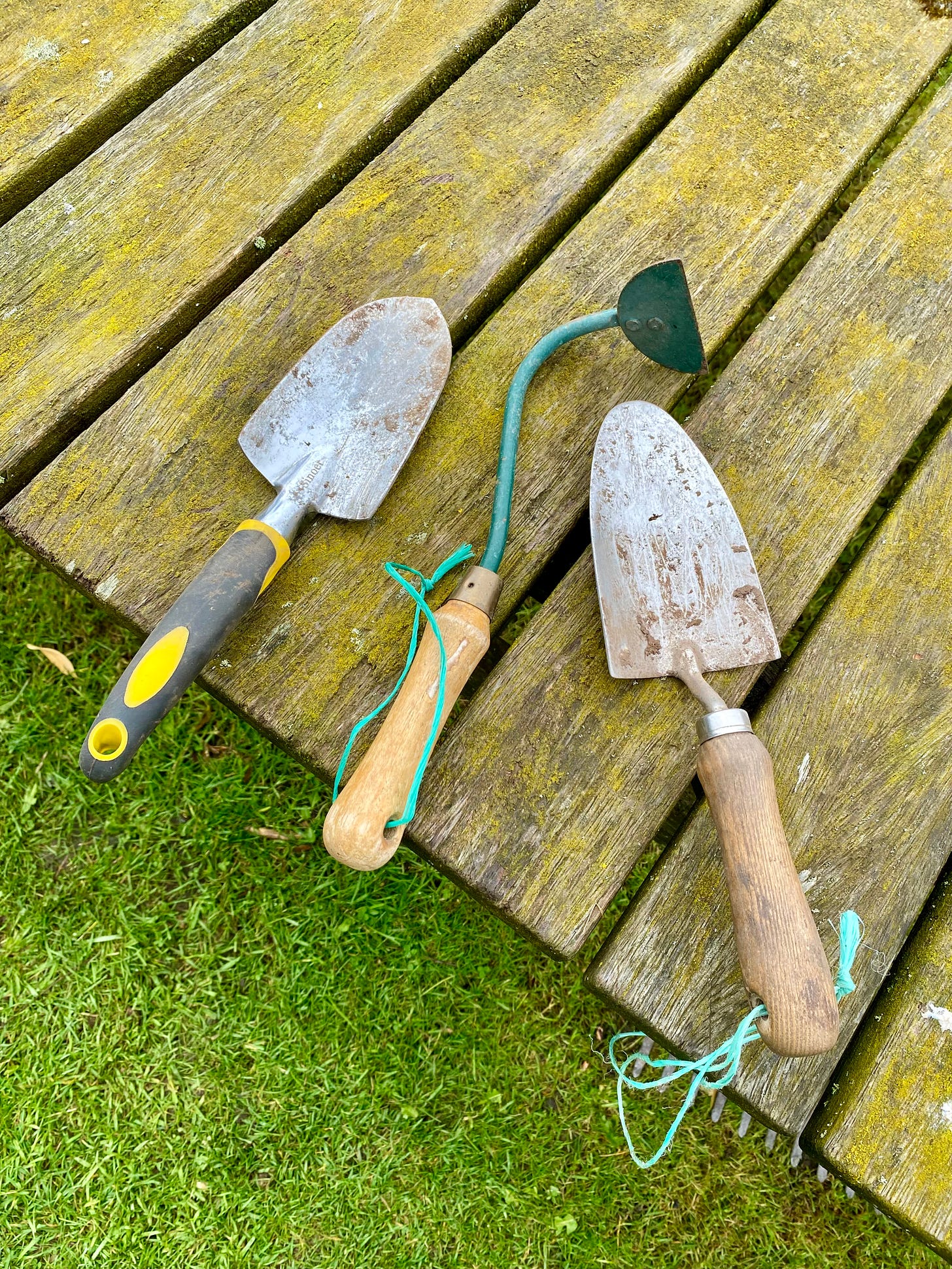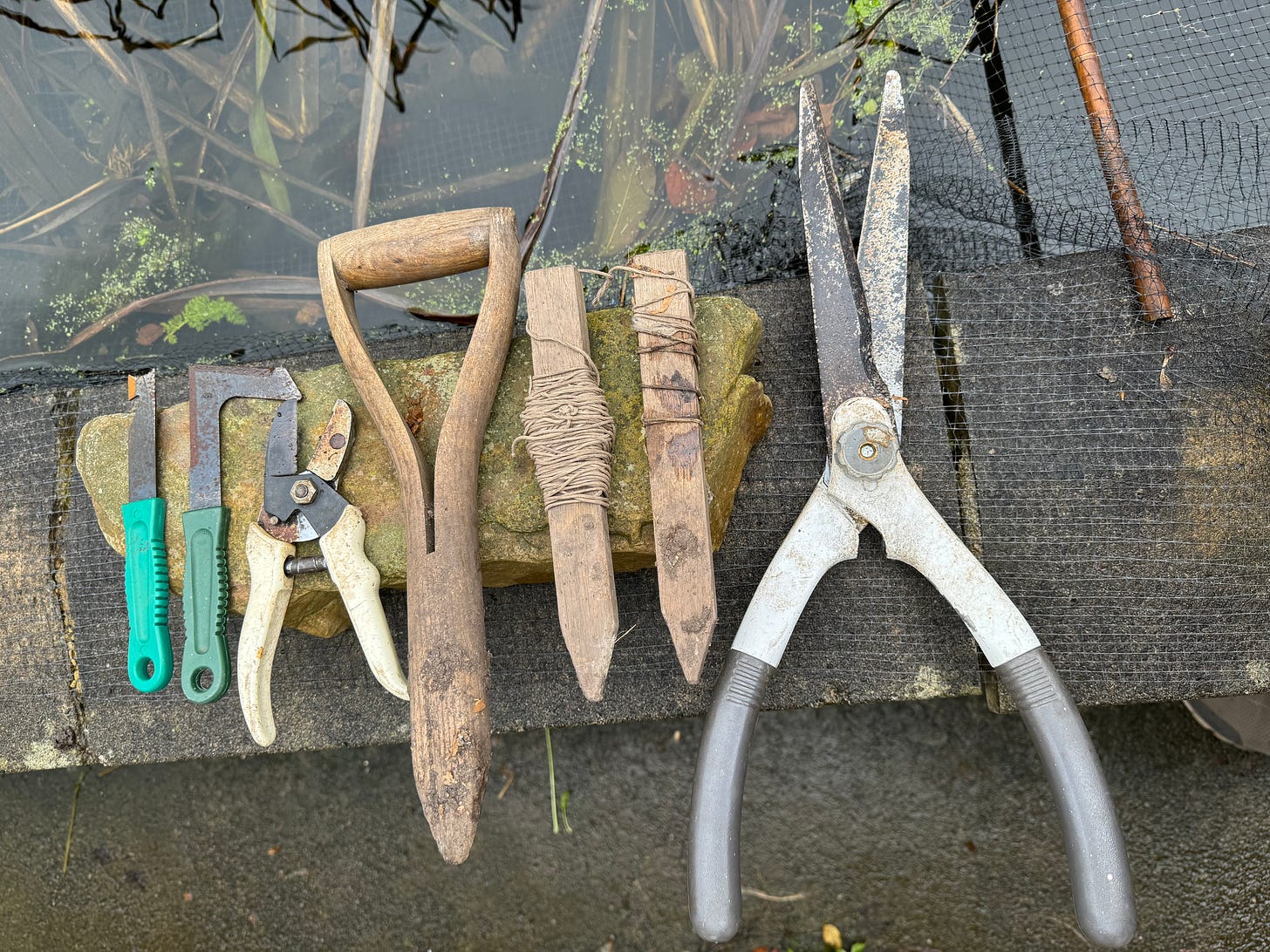Chapter seven: Tools of the Trade.
I’d say, it’s almost Christmas, what with the calendar having just turned December the 1st, Carols playing in stereo around the house, and my wife and daughter declaring, triumphantly, that they’ve already completed their annual shopping fest. Reassuringly, that’s how most all our Christmas’s pan out, heralding the joy and feasting to come. They’re enviably and indefatigably well-organised. I sigh with relief; the end is in sight, bar the shouting and putting up the tree and decorations. I enjoy growing, prepping and cooking the vegetables, and of course, eating them; and I don’t mind too much buying presents, useful ones, providing now I can do it online, because I no longer enjoy browsing shelves mostly full of tat. Least said, the better. However, there are still pressies that can and do get my blood flowing, whether it be some little knickknack, CD, or a pair of socks. In my workshop, I have accrued all the tools I need to make a table or cabinet. I am blessed. The same goes for my tackle-bag; I want for nothing. The garden-shed is, de facto, far less taxing on our finances, because nearly everything I use to work the land is as old as the hills; and whilst it seemed an expense I could do without, back in the day, it was certainly built to last by craftsmen who knew what they were about. Good job, because on occasions too numerous to mention, I have totally abused my equipment; and yet each season, it musters to the cause without complaint. I really do warm to that.
If you are just starting out, or have gaps in your trophy-cabinet, this short guide to tooling-up should save you money, in the long-run:
“Penny-wise and pound-foolish…”
We have a saying in Yorkshire: “Look after the pennies and the pounds will look after themselves.” Whilst that may be true most of the time, it’s not always the case. When I was a youngster, growing up in a typical working-class, backstreet community in West Yorkshire, we honestly possessed next to nothing. Our clothes were raggy and a broken penknife, piece of string, or match in your jeans’ pocket, or a bike frame found dumped in a field out back, was considered a bounty of first magnitude and thrilling beyond comprehension. My dad took on an allotment, when I was seven, using tools he’d inherited from his dad, such as they were, from the turn of the previous century. They were rudimentary, rusty, overly-hefty and had clearly seen better days. Both fork and spade were practically worn-out. Even as a child, I aspired to something better. So, tooling-up to garden, when I did have a few pennies in my pocket, was both daunting and exciting at the same time. You’ll understand a little, then, perhaps why it’s been a most fulfilling journey, because I love tools, whether designed for gardening, fishing or woodcraft. I’ve enjoyed ownership of the very best in rods and reels, having once been blighted by the worst; but it’s always been done on a shoestring budget, slowly and patiently over many years. Since I now only fish for one species, barbel, I only use one pair of Harrison’s with two Shimano carp-reels mounted. Gardening need not be so taxing, with a bit of forethought; but make no mistake, buying quality implements today remains a challenge, purely because there is so much choice and hype in the market. Back in my early days, only a few companies made the best tools and I couldn’t afford any of them. Times have changed, but it’s still a minefield of decision-making, where cost-cutting often ends up costing considerably more, but researching the market invariably pays dividends and saves money, in the long-run. The good thing about gardening implements is you can readily pick them up in a hardware store or garden-centre and handle them, to see if you like the feel. Well-made tools generally look and feel right; they’re well-balanced, and what’s more, they no longer cost the earth.
If I had to go back forty-five years to when I graduated in Medicine and took up gardening, would I change anything? No, I don’t think so. I’ve broken a few cheap spades that were not up to scratch, attempting to dig-over heavy soil in wet conditions. There’s a lesson there. In addition, I shattered two potato forks that I also used for digging lugworms in our local estuary, again, not well-made. The shafts were fashioned out of some sort of open-grained wood, and the tines on one of the forks were poorly welded in place and eventually came loose. Since all spades and forks have an inherent weak point, where they’re drilled through to receive a rivet that holds the business end and handle in place on the shaft, the wood used must be of the best, usually ash. It’s both flexible and strong, and very resilient over time. I once, in my naivety, borrowed a so-called ergonomic, plastic-handled spade off a friend, to investigate the market, and snapped it clean in two, second time out; very embarrassing. That was a long time ago. Since then, I’ve made sure all my subsequent purchases have been well thought through; and they have, in turn, served me extremely well, some for over four decades and counting. Looked after properly, they’ll serve several generations yet to come, in like manner. Do I have favourites? Yes, I surely do, and I’ll tell you why. First things first, though; you only need five relatively cheap hand-tools to do 95% of the work in your garden. Everything else is pure luxury, and just there to make life easier. Add in a saw and… Whoops! I’m getting ahead of myself. Well, it is Christmas, after all, and people are apt to ask what others want in their stockings. My wife pointed out, this morning, that none of this stuff would fit in a stocking!
My five garden hand-tool essentials are: a spade, fork, rake, trowel and a pair of secateurs.
1. Secateurs:
Why secateurs, first on the list, you may ask? Because there’s an awful lot of pruning goes on, keeping garden plants in check: roses, raspberries and blackberries, to name but a few; and they’re cheap and cheerful. My first pair, of the anvil variety, still cut well and cost me a mere £6, forty-four years ago, from the local Woolworth’s store. They’re not much more expensive, today, although I do prefer the Felco cross-cut version, for their cleaner cut. The remaining four items require a little more thought, so don’t rush this part of the process. There really is a right fit for everybody.
2. The Humble Spade:
We have another saying in Yorkshire: “Call a spade a spade.” - referring to the fact that, to the uneducated desk-wallah, a spade will often be referred to as a shovel, and vice-versa. Heard it said many times; perhaps, because a spade has no moving parts, unlike say a fishing-reel, so it’s easy to overlook its design finesse. Nothing else can do what a spade can, not even a decent broad-tined fork. I know; I once tried using my potato-fork to deep-work a previously-dug bed on my allotment, having accidentally left my spade at home. T’was a poor do. Preparing a vegetable garden, properly, requires double or ‘bastard’ digging, and whereas a fork will pull through the soil, fragmenting it, and making turning difficult or impossible, the blade on a spade will cut clods free, separate and lift them and then turn them over with ease. Clods can then be chopped, roughly, two or three times and left to the elements, especially over winter, when frosts will break them down into a fine tilth for you. It’s a common practice in Britain; and it works.
Tip: don’t bite off more than you can chew, when digging. Four-inch clods turn over more than twice as easily as eight-inch clods, a bit like derailleur gears on a bike aid hill climbing. It’s a fact of life. The bigger the clod, the more unwieldy it becomes and the sooner the person tires. Less really is more. That’s why, sometimes, I’ve enjoyed using my wife’s spade, when too tired to use my own.
Which brings me to my next point: stainless steel vs ordinary steel. Stainless is best. It presents very low friction to the soil on penetration, which over the course of a day’s digging all adds up; and it cleans ten-times easier, afterwards, which is equally telling on a tired user’s arm. When I couldn’t afford anything other than plain steel, I always found them heavy and cumbersome, possibly because they were always clagged with soil, front and back; more friction, more weight, more effort. The good news is that the price of a decent spade has fallen dramatically over the last ten or so years, and the market is much more competitive. When I bought my Spear & Jackson stainless-steel version, thirty years ago, it cost an eye-watering £72. That was a lot of money back then. Don’t get me wrong, I’d still spend that amount now, on what is the most versatile tool in my armamentarium, if I had to. You don’t. Stainless-steel has become the new norm and prices have fallen, correspondingly. Focus now is more on choosing your preferred blade-size and weight, and length of shaft to suit your physique, plus a handle to grip onto. I’ve tried both D and T-grips. I like both.
Tip: Because it works as a blade, it goes without saying that a spade should be kept sharp; not silly-sharp, just bevelled like a chisel by passing a file along the back-edge a few times, about once every three years. It will massively improve performance, ease penetration to the full depth of the blade, and chop through roots.
To conclude, spades really do have finesse. My S&J version has a good weight to it and a sharp leading-edge, with a very low coefficient of friction when it enters the soil. It’s far and away my favourite tool, and a true extension of my arm. I can clean it with the back of my hand or my thumb with commensurate ease, in seconds, even when I’m tired. If I had to, I could manage without a fork. A spade will definitely break up soil to a coarse crumb. However, a fork and rake will do that job far more efficiently and effectively; so they are next on my list.
3. Garden Fork:
Thirty years ago, I broke the bank and treated myself to an S&J stainless-steel fork to make a matching pair with my spade, having dallied for over a year, weighing up the benefits and cost. I use it regularly for light turning of the topsoil, once double-dug. At 12” long in the tine, it’s also great for u-barring my beds, prior to planting, raking uneven hillocks level, and handling manure and compost. Penetration is effortless and, like the spade, it’s as tough as old boots. However, a word of warning to the wise: don’t do what I did and try levering out 7-9” rocks from your subsoil. The ‘moment of a force about a point’ will ensure you bend your tines out of true, guaranteed; and they will never go back! Keep your tines coplanar; if you look closely, mine aren’t.
My steel potato-fork (see previous photo-but-one with the rake centre-stage), also from the S&J stable, is heavy, but very robust. It’s great for lifting spuds and collecting manure from the stables, and also digging lugworms. It’s built to take the strain and has had a lot of punishment over the years. I’m very fond of it.
Clever design feature: Note that when the spade’s blade and the tines of the fork are inserted vertically into the ground, the shafts cant forwards a few degrees, away from the torso of the user by a significant amount, so as not to impede body movement on penetration, and also to create an arc through which to lever back, when lifting soil. It’s really important. I once used someone else’s spade and fork, when helping them break ground on their new allotment. Shaft and blade and tines were directly inline. At first, I thought there was something wrong with me; it was such a struggle. Then, I sussed out what the problem was. Both proved hopelessly clumsy. There’s a modern variant, with the grip bent forwards, away from elbow and wrist. It claims to improve leverage; but it doesn’t suit my style of digging at all, and does nothing to improve efficiency, as far as I can see.
Tip: Old broken spade or fork handles make excellent dibbers. I have two.
4. The Rake:
My heavy-duty rake was another of my first S&J purchases, over forty years ago, again from a local Woolworth’s store. I think I paid £8 for it. It’s perfect for creating a beautiful fine tilth and table-top finish, prior to sowing or planting, when all the donkey-work’s been done with fork and spade. Again, one note of caution: don’t ever leave your rake laid on the ground. You will stand on it, sooner or later, and it will crack you on the skull, hard! It’s the sort of thing you should do only once and learn. Sadly, I’ve had a lot of nasty thwacks over the years, mostly due to fatigue.
5. The Trowel:
A good trowel acts like a miniature spade and is tremendously useful, at the ‘micro’ level, for planting out seedlings, removing occasional weeds and creating furrows for sowing seeds. My soil is so loose now that I also use mine for deep-planting my seed-potatoes, a process that I will go into in detail, later in my blog. It’s a tool that lends to dexterity and fine movement, so buy a trowel that feels right in your grip.
This trowel was bought with the rake and is made from the same steel, by the same company. It’s taken all kinds of punishment, including being left out all winter-long, under the snow. I have a modern lightweight ‘ergonomic’ variant, a Christmas present last year, but I’m not too keen. I much prefer heft.
That’s it, my top-five! I hope I have stimulated an interest in their design and usefulness around the garden.
The rest of my tools are something of a miscellany, what I would call the luxury items in my shed; implements that definitely take the sting out of a day’s labour, certainly at my stage in life, but are equally non-essential. If you are starting out gardening and strapped for cash, only consider adding these one at a time, as you find fit.
a. The green onion-hoe (sandwiched in-between the two trowels) is excellent for increasing reach into the centre of 5’ wide deep-beds to hoe weeds, without damaging your plants, and also for scratching out drills along a straight-edge for sowing seeds. This one cost a £2. It’s a great tool.
b. Never got on too well with hoes until I discovered the push-pull hoe. They’re fantastic for cutting off weeds 1-2” down in the soil, both on the push and the pull, as the name suggests, and are almost frictionless, once you get the knack. A joy to use, this Wolfe version has a detachable handle, and an interchangeable rake and rotavator fitting, making this probably the most versatile tool in my shed. I love it.
c. Builders line or string. Indispensable and cheap as chips. Make your own. The two green-handled weeding implements (below) cost pennies from Wilko’s, now sadly shut down. A spur-of-the-moment purchase on my part, based on frugality, turned out to be one of my very best. They’re fantastic at removing weeds from the lawn and between paving stones!
d. Diamond sharpener; two-sided, coarse and fine. For years, I used my butcher’s steel to sharpen my loppers and secateurs; not the best solution. Diamond sharpeners do the same job ten-times better.
e. Hedge-shears and loppers. My shears (above) were bought from Woolworth’s, forty years ago, and are made by Fiskars; you could almost shave with them. I also have a Stihl petrol hedge-trimmer, but I find the hand-shears far easier to handle and more therapeutic to use. Both cut well and the finish is perfect. The loppers are from Felco and as tough as old boots; they need to be. Lopping trees takes it out of handle and handler, alike. I’ve seen too many handles snap. So, keep the blade sharp.
f. Steps and platforms are a boon when having to reach high; but keep them stable! Stepladders, in particular, are prone to tipping on uneven ground. Broken-bone country.
g. Finally, there’s my Zubat 330 pruning saw (above) and Fiskars long-reach loppers (below). They makes pruning trees a breeze; I mean, if you have apple trees, save up and buy them. You won’t regret it.
There you have it, pretty much everything I own for gardening, and proved by test of time.
Merry Christmas and God bless! This blog will continue in the New Year. I greatly look forward to it; it’s seed time.














